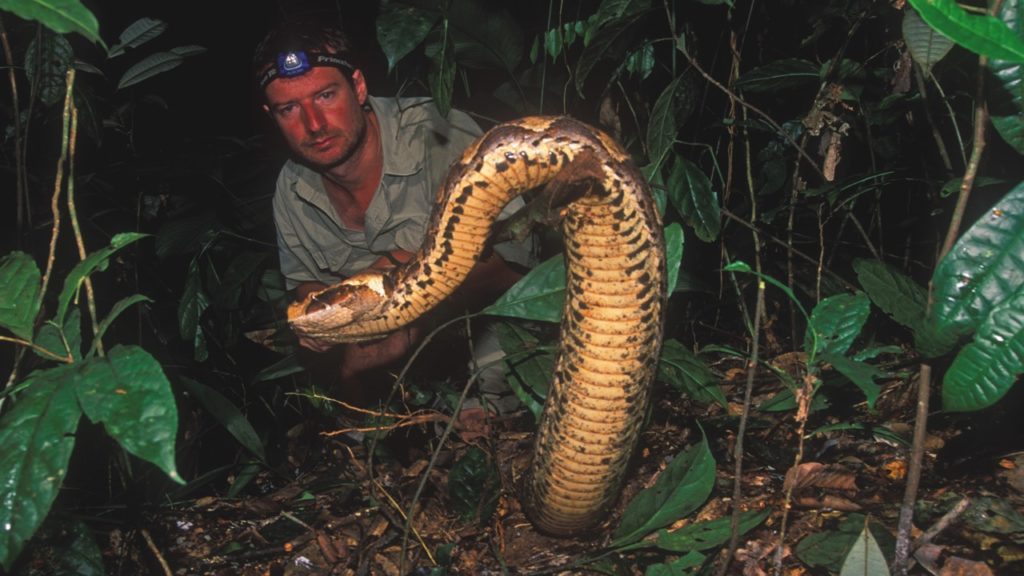To most of us, medicine comes from the chemist. There we can stock up on blister packs of pills, tubes of ointments and bottles of innocuous-looking liquid. But the original sources of drugs can be much more exotic than your local pharmacist. The first HIV drug, for example, came from a sea sponge, while a heart disease drug is derived from the foxglove plant. You can’t get much more exotic than venomous animals and that’s where scientists are turning their attention. Venoms are cocktails made up of between tens and hundreds of different toxins, usually proteins and smaller chains of amino acids similar to proteins called peptides, along with organic molecules, such as hormones, antibiotics and other compounds that are involved in the metabolic functions of living things. Venoms help animals to immobilize predators in self- defence.
To qualify as venom, as opposed to poison, the toxin mixture must be ‘injected’ into another animal. Around 150,000 animal species have evolved the machinery to produce venom and inject it into prey. Some are familiar: snakes with their stings.
Others are less well known: the male duck-billed platypus with the venom-bearing spurs on its back legs; the toxic saliva of particular types of shrew; the beautiful but deadly cone snail releasing its harpoon-like proboscis into tiny fish on the seabed… It’s evolution that’s made venom such a good source of drugs, says Dr Zoltan Takacs, a Hungarian – born scientist-adventurer who founded the World Toxin Bank.

“Venom toxics are among the most potent and precision-targeted molecules on Earth,” he explains. “From mankind’s point of view, this makes venom toxins ideal templates for drug discovery.” Over hundreds of millions of years, the toxins in venoms have been honed to target highly specific components of their prey’s vital bodily functions. Some toxics attack the nervous system, causing paralysis by interfering with nerve-to-muscle communication.
Others prevent blood clotting, resulting in massive bleeding. Yet its these same dangerous properties that could make them useful. Substances that interfere with the nervous system could make great painkillers, while blood thinning is a vital part of treatment for heart disease.
Don’t try this at home – But this doesn’t mean that doctors will soon be recommending you to keep a few venomous snakes and spiders around the house. “Venom is a complex mixture of toxins,” says Takacs. “You need to isolate a single particular toxin to have a safe therapeutic agent.” Using venoms as a source of drugs isn’t a new idea. Ancient civilisations used venoms in medicines, and the first venom – derived drug of modern times became available in the UK in 1981.
There are now around 20 different medications originating from animal venoms, says Takacs, targeting everything for heart disease to diabetes. But only recently have scientists been in possession of the technology necessary to systematically search through venoms for likely drug candidates. Takacs collects venoms from around the world, often in remote areas, to get his hands on new venom samples.
Using Designer Toxins technology, which he co-invented, Takacs fuses natural toxins from different venomous animals into a single molecule. This technique is used to create vast libraries of toxin variants, such as the World Toxin Bank, that can be screened against known drug targets to find toxins that have the highest promise to treat diseases. “Imagine fusing pieces of snake, scorpion and sea snail toxins together and ending up with variants that are rooted in nature, yet have new biological properties,” says Takacs.
“It almost gives you the luxury of handpicking and tweaking some of the best pieces of molecules that evolution ever designed.” With around 20 million venom toxins in nature left to explore, it looks like we may be seeing more and more drugs inspired by nature’s powerful venoms in our bathroom cabinets. So where might they come from?














